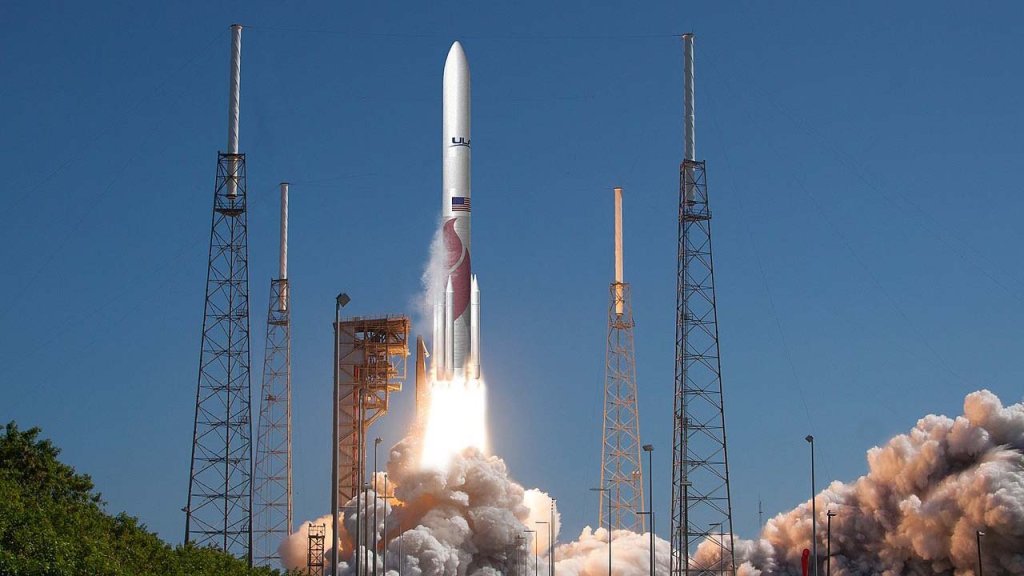Credit: Par SeanMichealClemes — Travail personnel, CC BY-SA 4.0, https://commons.wikimedia.org/w/index.php?curid=117737080
United Launch Alliance (ULA) has set May 4 as the date for the maiden launch of its new Vulcan rocket. The flight will launch Astrobotic Technology’s Peregrine spacecraft to land on the Moon as well as two other payloads.
CEO Tory Bruno said during a call with reporters on Thursday that qualification of Blue Origin’s BE-4 first-stage engine was the main pacing item for the launch. Engineers found the oxygen pump on one of the two BE-4 engines had about 5 percent better performance than other engines the company had tested.
Bruno said that although performance variations of that magnitude are not uncommon across large rocket motors, ULA wanted to make sure it was not a sign of a more serious problem. The engine was taken off the test stand and disassembled for examination.
With the examination completed, ULA is now prepared to resume testing with the remaining BE-4 engine, he added. That process should take about six weeks.
BE-4 engines have long been the main pacing item for the Vulcan rocket, which is designed to replace the Atlas V and Delta IV boosters. Blue Origin was years behind the original schedule for delivering them to ULA. Blue Origin will also use the engines in its New Glenn rocket.
Launch windows only occur for a few days every month due to the specific requirements of Astrobotic’s Mission One. Bruno said the company might be able to meet a launch window in early April if the engine testing goes well.
However, ULA settled on a four-day long window that begins on May 4. The date allows the company to schedule launches for other customers throughout the year.
Astrobotic’s Peregrine lander will carry 14 payloads for NASA and other customers to the lunar surface. The mission is being funded under the space agency’s Commercial Lunar Payload Services (CLPS) program under which companies are paid to deliver payloads to the moon.
Vulcan’s first launch will carry two demonstration satellites for Amazon’s Kuiper 3,276-spacecraft broadband constellation. It will also launch cremated remains, human DNA samples, and hair samples from the late U.S. presidents George Washington, Dwight Eisenhower, John F. Kennedy and Ronald Reagan into deep space for Celestis.
Bruno expressed confidence that Astrobotic, Amazon and Celestis would deliver their payloads in time for integration on Vulcan in time for the May 4 launch.
Testing of the first Vulcan rocket is going very well at the company’s vertical integration facility at the Cape Canaveral Space Force Station in Florida, he said. The booster will be rolled out to the launch pad at Cape Canaveral Space Force Station in Florida within a few days. Launch personnel will fill the vehicle with propellants and pressurized gas and conduct wet dress rehearsal that will take the countdown to zero. The first-stage BE-4 engines will be fired at about 70 percent thrust for 3.5 seconds.
Vulcan’s maiden launch is the first of two certification flights required before the new launch vehicle can begin carrying national security payloads. Bruno said it will take several months for engineers to analyze the data from the flight and the impact of the booster on the launch pad.
ULA is expecting to conduct two Vulcan launches this year, with the number doubling to four in 2024. The company will ramp up to launch as often as twice per month by 2026, he added.
Bruno said it would take several years before ULA can begin to recover and reuse the first-stage BE-4 engines.

